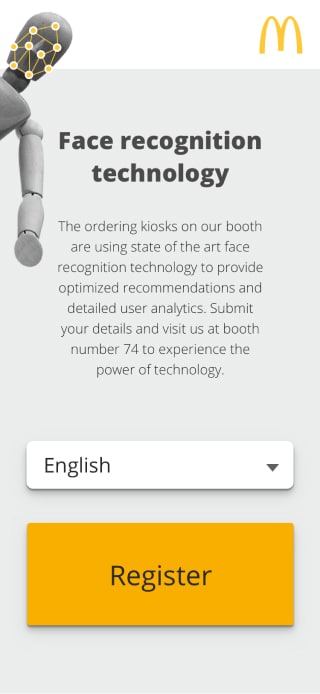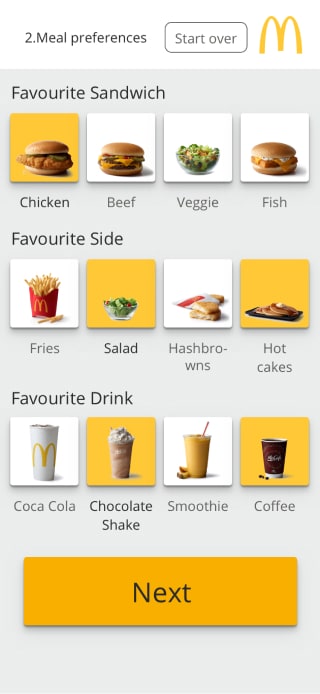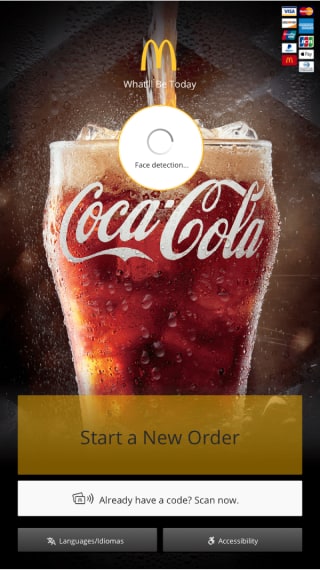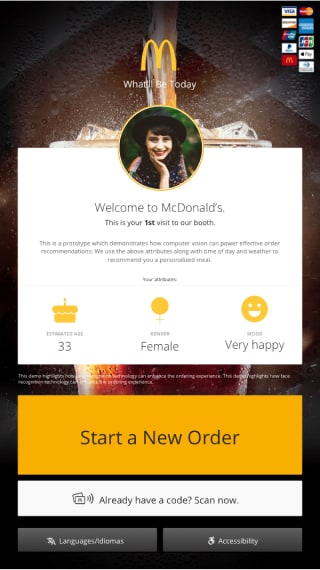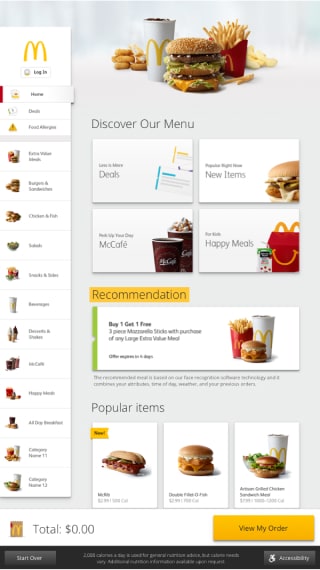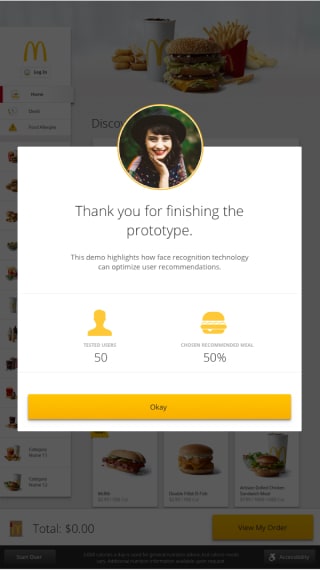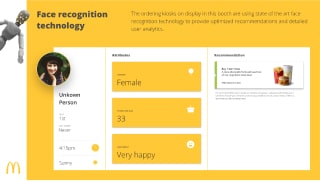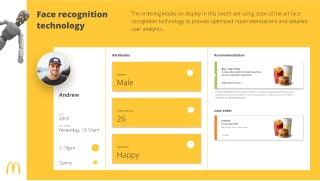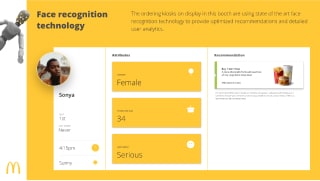McDonald's
We implemented a new face recognition software to McDonald’s digital kiosks
Recognizing your face and emotions and providing you with the most welcoming experience every time you visit a restaurant.
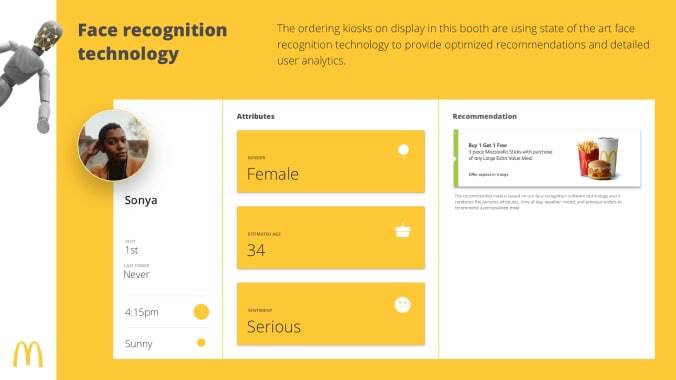
We worked on implementing a new state-of-the-art face recognition software to McDonald’s digital kiosks to improve usability and delight users.
- strategy
- usability research
- UX and UI design
About the client
McDonald’s restaurants are found in about 120 countries and territories around the world and serve more than 69 million customers each day. McDonald’s operates 37,855 restaurants worldwide, employing more than 1,7 million employees worldwide.
There are currently a total of 2,770 company-owned locations and 35,085 franchised locations, which includes 21,865 locations franchised to conventional franchisees, 7,225 locations licensed to developmental licensees, and 6,175 locations licensed to foreign affiliates. All the data is from Wikipedia as of 2019.
37,885
restaurants all over the world
75
hamburgers sold per minute globally
69,000,000
customers served all over the world
60,000,000
downloads of the McDonald’s mobile app
About the project
The goal of the project was to introduce state-of-the-art face recognition technology to McDonald’s. Face recognition can offer many benefits, for the company itself and for the customers.
The technology uses a facial recognition system that can find out the person sex, age, even sentiment. Those findings can be used in various ways. Statistical data and advanced meal recommendation systems are just some of the proposed use cases.
Three steps
The basis of the project was to showcase the technology on a McDonald’s conference. The first step was to leave your data and meal preferences on an onsite tablet and mobile app. Next step was placing a user in front of an ordering kiosk booth. At the same time, the nearby big screen was showing what happens when the recognition software kicks in.
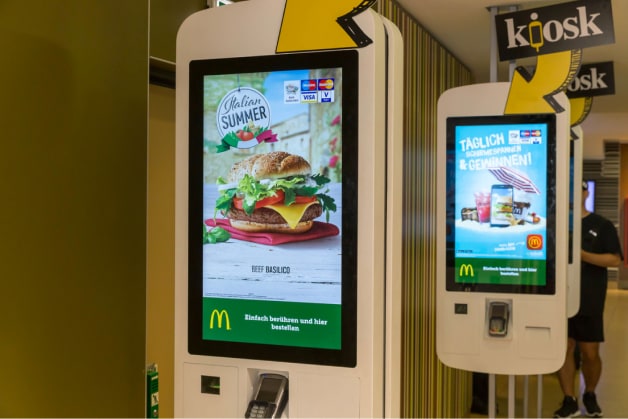
Three steps
The basis of the project was to showcase the technology on a McDonald’s conference. The first step was to leave your data and meal preferences on an onsite tablet and mobile app. Next step was placing a user in front of an ordering kiosk booth. At the same time, the nearby big screen was showing what happens when the recognition software kicks in.
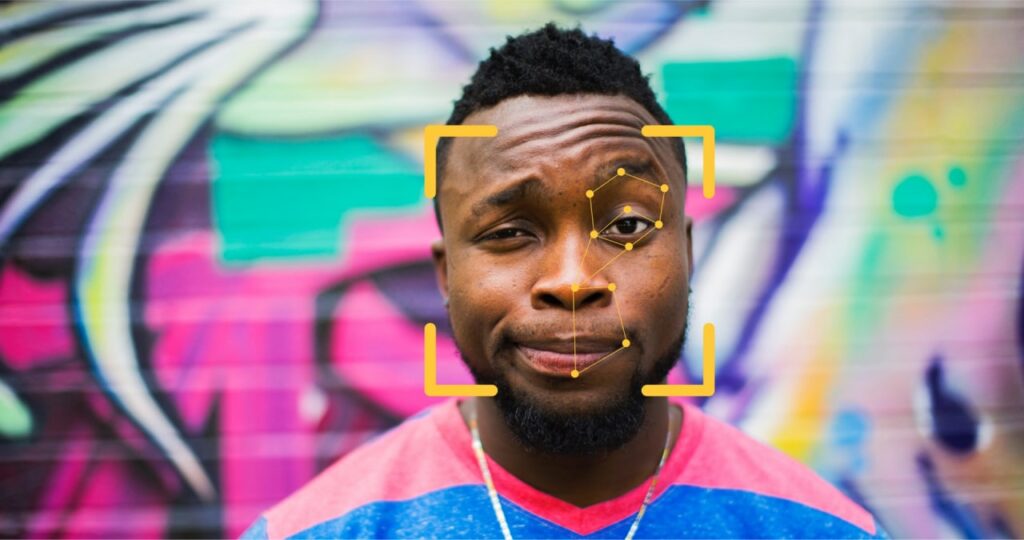
Use cases
There were four use cases and personas that we needed to address. Read more and see how we did it.
Unknown user, 1st time visiting
No previous orders were made, and there is no data about the user.
Solution: Display recommended meals based on the time of the day, sentiment, and weather.
Unknown user, 1st time visiting
Previous orders were made, but there is no information about the user or their selected meal preferences.
Solution: Display recommended meal based on their previous orders, time of the day, sentiment, and weather.
Known user, 1st time visiting
No previous orders were made, but there is data about the user and their meal preference.
Solution: Display recommended meals based on their selected meal preferences, time of the day, sentiment, and weather.
Known user, n-th time visiting
Previous orders were made, and there is available information about the user and their meal preferences.
Solution: Previous orders were made, and there is available information about the user and their meal preferences.
Results
Being a demo and a new explorative concept, we can’t publicly share relevant metrics.
Services utilized
Project strategy
- client workshop
- research
- defining MVP
- feature set
UX and UI design
- information architecture
- user experience
- prototyping
- UI design
Like what you see here?
